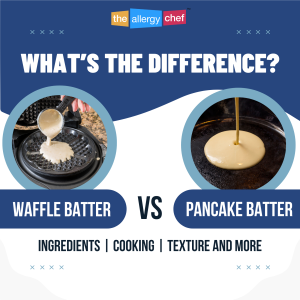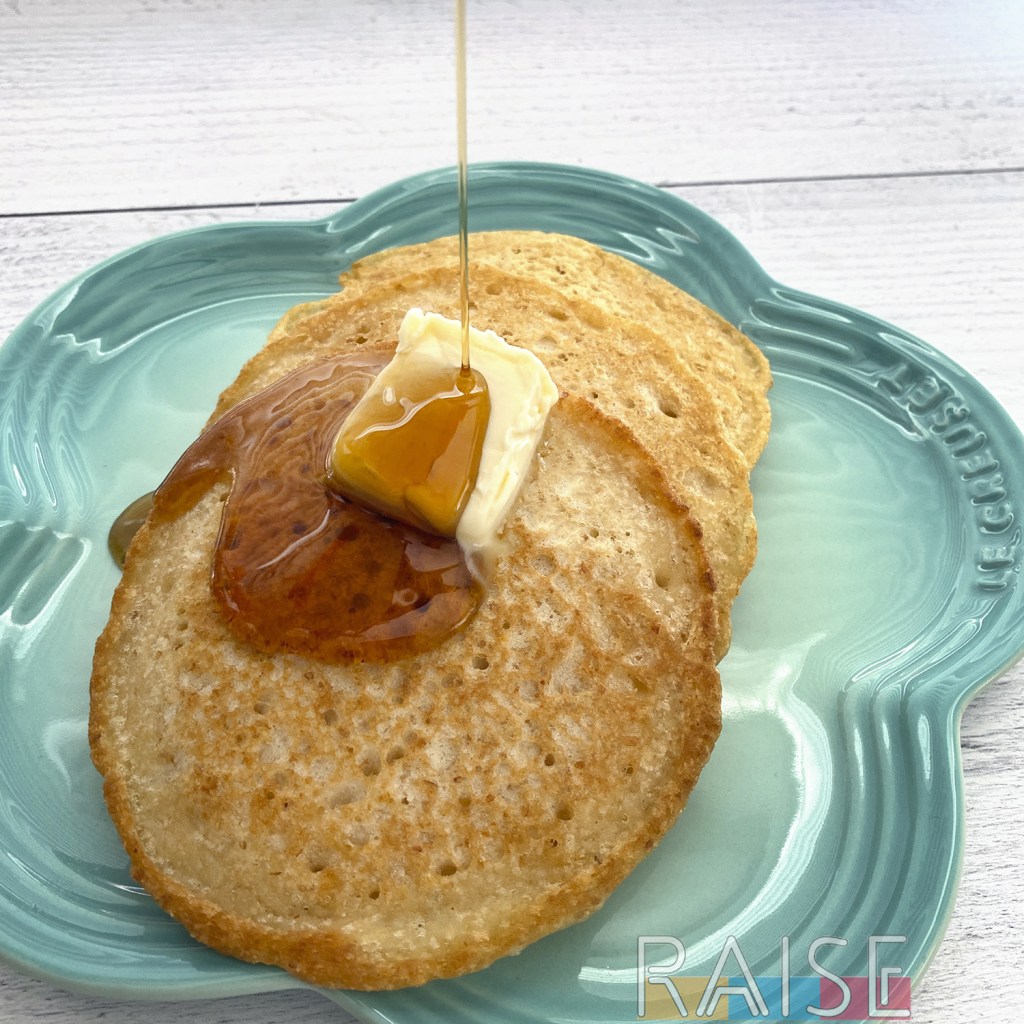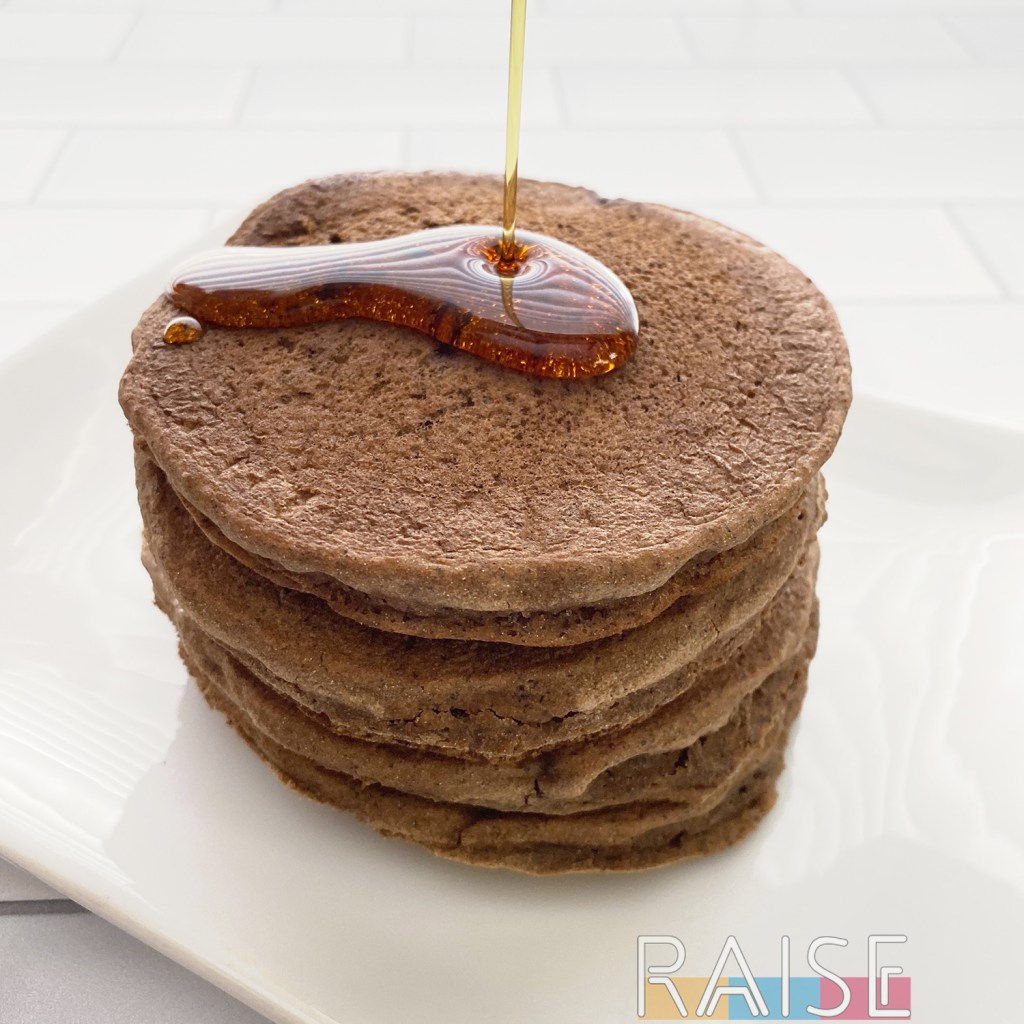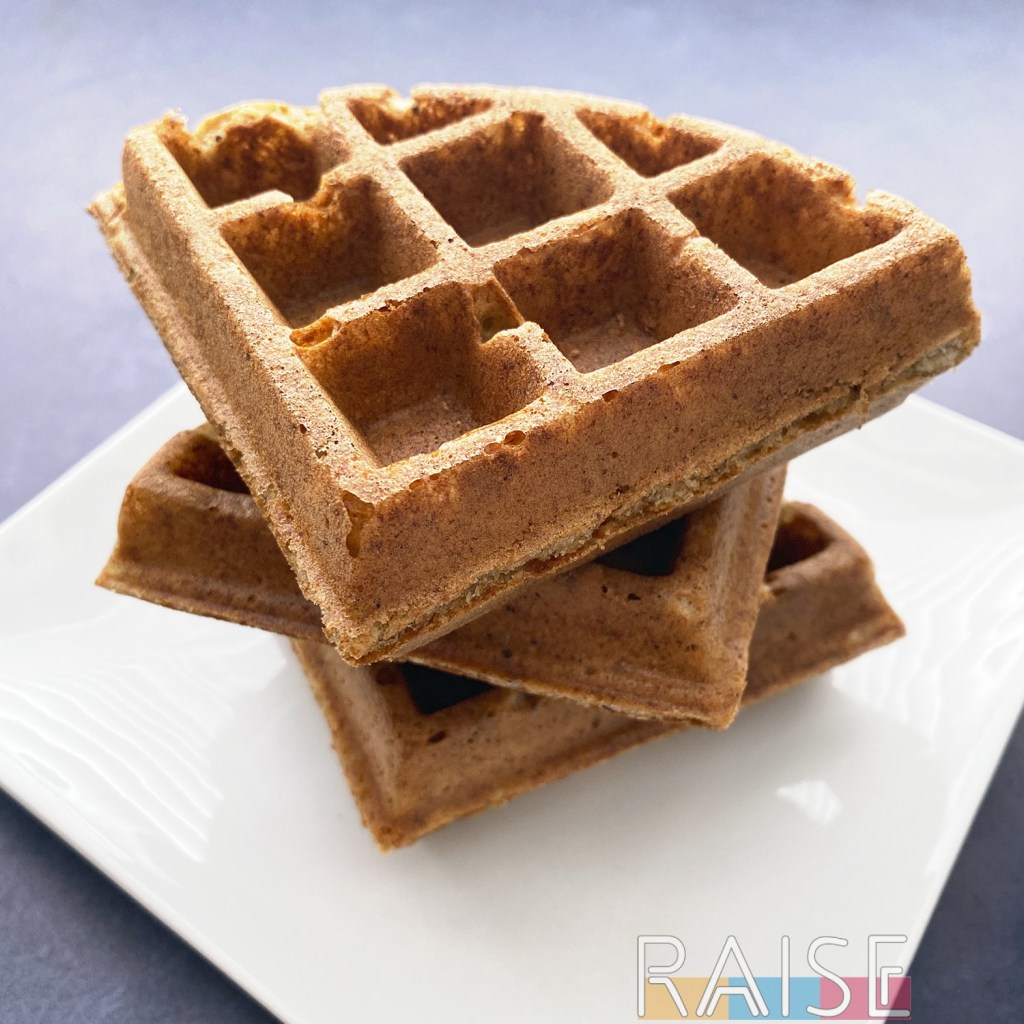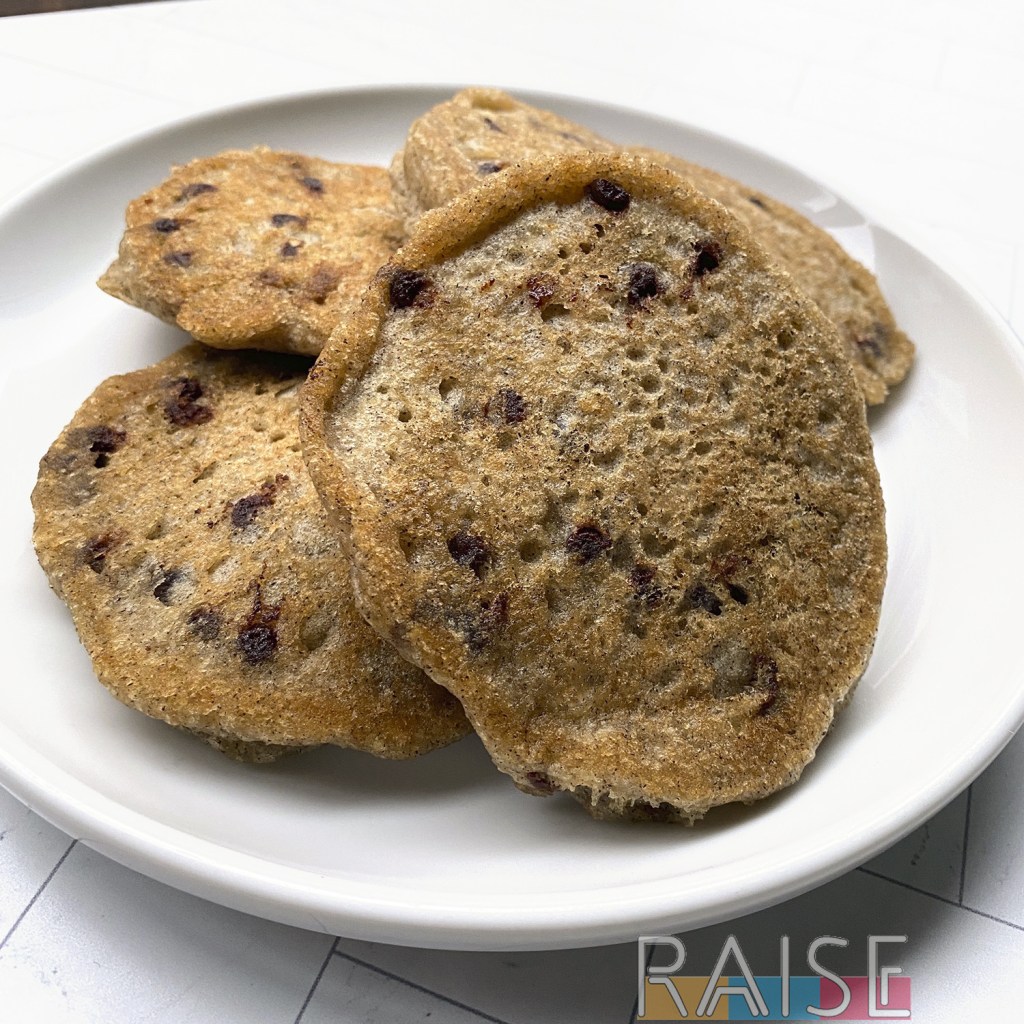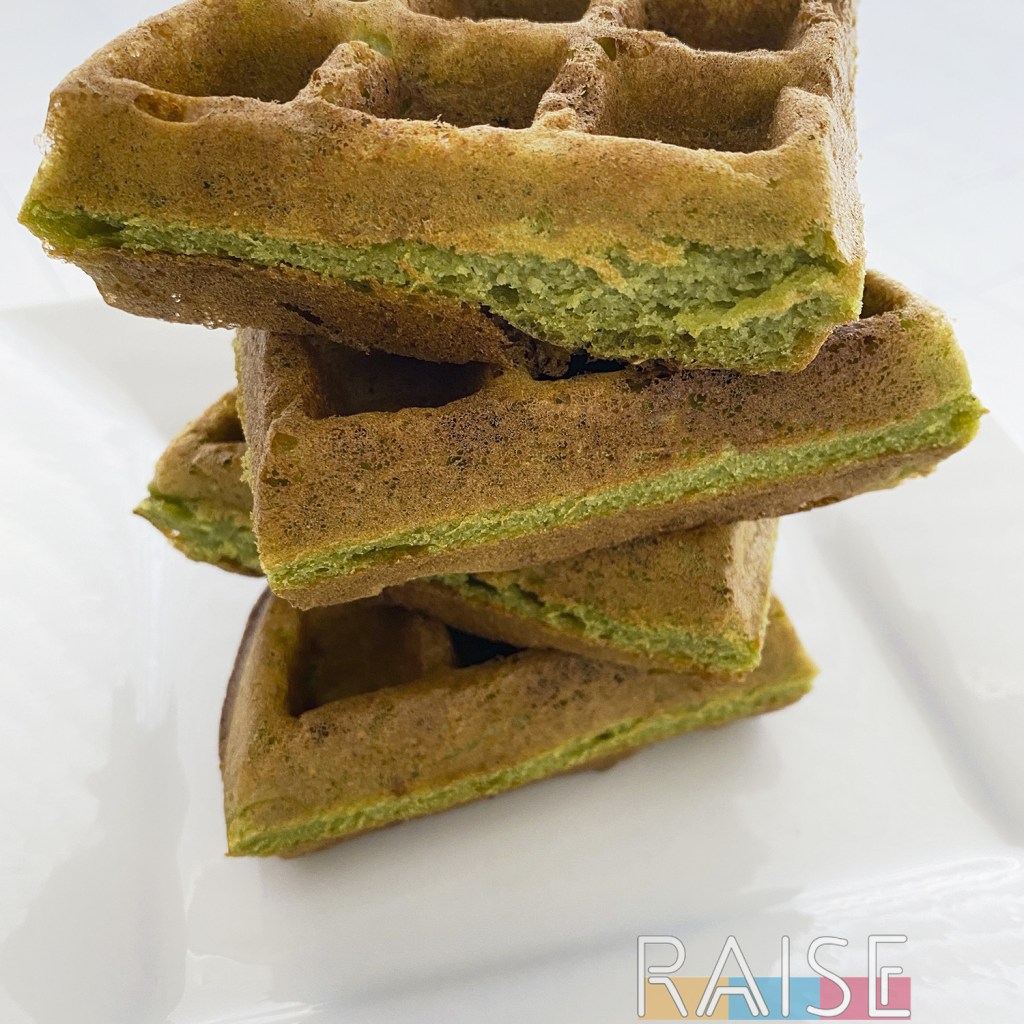Wether you’re a fan of a classic stack of pancakes or swear by your homemade waffle mix, you may be wondering what makes waffles and pancakes different.
The main difference between pancake batter and waffle batter is that waffles have a higher fat content and additional sugar in the batter. However, there are several key differences in the textures, cooking, and more. So, let’s take a look at differences and similarities between waffles and pancakes.
Key Difference: How You Cook a Pancake Recipe vs a Waffle Recipe
After you’ve mixed your dry ingredients and wet ingredients, waffles head over to a waffle iron whilst pancakes head over to a frying pan (or a hot griddle). The difference in these cooking methods is pretty big. A waffle iron provides heat from both the top and bottom. Your batter is fully enclosed, and you’ll usually see some steam production.
Pancakes on the other hand are cooked in a pan, usually non-stick, on your stovetop. Many people add a couple of tablespoons of butter (can be dairy free butter) to the pan and melt it before adding the pancake batter.
You can use a large double waffle maker (Belgian waffle style) to make waffles and it saves SO much time. You can walk away from the unit and it will beep when the waffles are ready. With pancakes, you have to babysit them since they need to be flipped to cook on both sides. You’ll also need to use two pans at once if you want to get through your pancake batter quickly. This is exactly why I am firmly Team Waffles.
Similarity: How You Mix Pancakes and Waffles
Both pancake recipes and waffle recipes can be broken down into wet ingredients and dry ingredients (more on those later). You’ll usually combine your dry ingredients in a large mixing bowl, then add your wet ingredients. From there, you’ll mix to combine, then cook your batter. The act of adding ingredients to the mixing bowl, then mixing is identical in both waffle and pancake batter.
For fluffier pancakes, I find that gently mixing your batter by hand is the way to go. If you use an electric mixer, you’ll still have delicious pancakes, but they won’t be quite the same. I have yet to see a difference when mixing waffle batter by hand like this, however, I develop free-from recipes. Those who are using wheat and eggs may indeed see a difference.
Key Difference: Fat Content
One of the biggest differences between waffle batter and pancake batter is that waffles have extra fat content. The addition of oil in the waffle batter helps contribute to the crisp exterior we all know and love.
The general rule of thumb is 2 Tablespoons of oil for each cup of waffle batter, however, this can vary by recipe. Since the oil helps provide a crispier exterior (compared what you’ll have with a pancake), a recipe developer may vary the amount they call for to create a different waffle experience for you.
Generally, waffle batter consistency will be different when compared to pancake batter. You’ll usually see that your waffle batter has a thicker consistency than your pancake batter. This isn’t a hard and fast rule, but the fat content of the waffles plays a part in this.
Similarity: How You Enjoy & Store Your Waffles and Pancakes
Both waffles and pancakes are part of the breakfast menu for millions of people all over planet Earth, every day. Kind of wild when you think about it. Something you’ll find all over the globe is that people are generally enjoying their waffles and pancakes with the same toppings. Popular toppings (and sometimes mix-ins) include:
- Butter/Dairy Free Butter
- Chocolate Chips
- Chocolate Sauce
- Dusting of Cinnamon or Powdered Sugar
- Fresh Fruit
- Ice Cream (for special occasions and for dessert)
- Jam/Jelly
- Maple Syrup
- Whipped Cream
The ability to store your waffles and pancakes for future use, in my humble opinion, is one of their best features. Both waffles and pancakes can be stored in your freezer. In fact, you can freeze the batters as well. Either way, this allows you to have faster meals in the future.
If freezing waffles is something you plan to do often, check out the Dash 4 inch mini waffle maker. It makes waffles in a commercial/store-bought size. When taking them out of the freezer, you can pop them into a standard toaster to cook, just like when you were a kid.
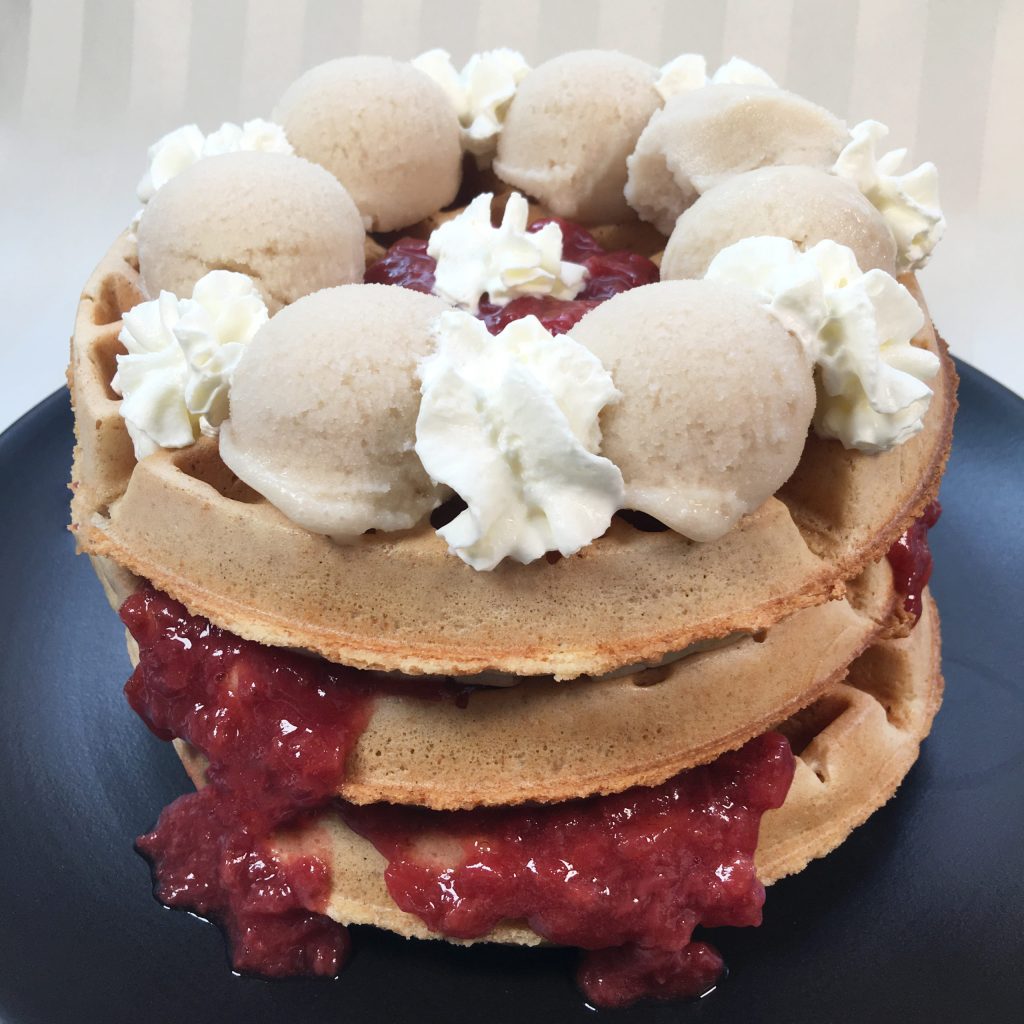
Key Difference: Sugar Content
You may have noticed that your store-bought waffle mix (or recipe you follow) has a little bit of sugar. Whilst this isn’t the biggest difference between pancake mixes and waffle mixes, the impact is noticeable. The extra sugar found in waffle mixes helps your waffles get that golden brown colour we all enjoy seeing.
Depending on the type of sugar used, the taste may change a little as well. Usually, waffle recipes call for a granulated sugar (cane sugar, maple sugar, coconut sugar, date sugar), and it’s important that you follow the instructions. Liquid sweeteners such as honey or maple syrup won’t behave the same in your recipe.
Whilst you can use a liquid sweetener, the outcome won’t be the same, so keep that in mind if you’re making swaps. If you plan to use less sugar than what’s called for in a recipe, know that this will slightly alter the outcome. The waffles will still be delicious (especially with toppings), but be sure you’re managing your expectations.
Typical Wet Ingredients and Dry Ingredients in Both Waffles & Pancakes
What I love about both pancakes and waffles is that they’re made from simple ingredients you can pronounce. You don’t need anything super fancy to have delicious pancakes and awesome waffles. Both start with these basic ingredients:
- All Purpose Flour (in my case a gluten free flour mixture)
- Baking Soda and/or Baking Powder (leavening/raising agent)
- Eggs(or egg substitutes for an egg free or vegan waffle)
- Milk of Choice (can be cow’s milk or plant-based/dairy free)
- Salt (just a little bit)
- Vanilla Extract
Answering Your Waffle Batter and Pancake Batter Questions
Will I get extra crispy waffles by adding more oil to the recipe?
Whilst a little extra oil won’t hurt the recipe, I’d refrain from adding too much more oil to the recipe than what’s called for. You could experiment with this, but I’ve found that after a certain point, the waffles turn out the same.
When I make a batch of waffles, I often turn up the browning setting on the waffle maker to help it come out more crisp. You will need to have a waffle iron that’s capable of that, and I think the investment is totally worth it if you eat waffles often.
What type of oil should I use to get the perfect waffles?
Honestly, any kind of oil will work. Vegetable oil is the most commonly used in restaurants. In my recipes, I usually call for extra virgin olive oil or tiger nut oil (tuber, not a tree nut). The flavour of both of these oils isn’t super noticeable which is important when selecting an oil.
Personally, I’d avoid oils such as coconut oil and avocado oil. They have pretty distinct flavours that you may pick up on (and not enjoy).
Is it possible to make good waffles without egg whites?
Yup, you totally can. Traditionally, egg whites are whipped then folded into the waffle batter. This creates a lighter and fluffy waffle. However, you can follow an egg free waffle recipe and still have a crisp waffle with a fluffy interior.
The key will be making sure there’s enough leavening agent to make up for the lack of lift usually provided by the egg. If you’re gluten free as well, it’s also important to incorporate light fluffy starches in your flour blend to ensure you get the best texture. All of the waffle recipes I share on RAISE are gluten + egg + dairy free, and you can see them here.
I’m all out of butter. Can I use a cooking oil when making my pancakes?
Yes, you can. The additional oil in your pan before cooking will generally behave like butter. However, you will lose the rich buttery flavour you may be used to. When using oil to cook your pancakes, you’ll still have the golden brown surface with a tiny bit of crisp at the edges. Be sure to cook your pancakes in a neutral flavoured oil, as you don’t want to have a jarring experience.
Is there any harm in using an extra egg or two in my waffle and pancake batters?
Generally, one extra egg in a recipe won’t alter the outcome too much. Personally, I wouldn’t add more than one. The fat from the egg yolks have an impact on the batters, as does the leavening power of the egg whites.
If you’re looking to have more eggs in your batters, the good news is that you can search for “high protein pancakes recipe” or “high protein waffles recipe”. These usually call for extra ingredients such as additional eggs, and sometimes a protein powder.

